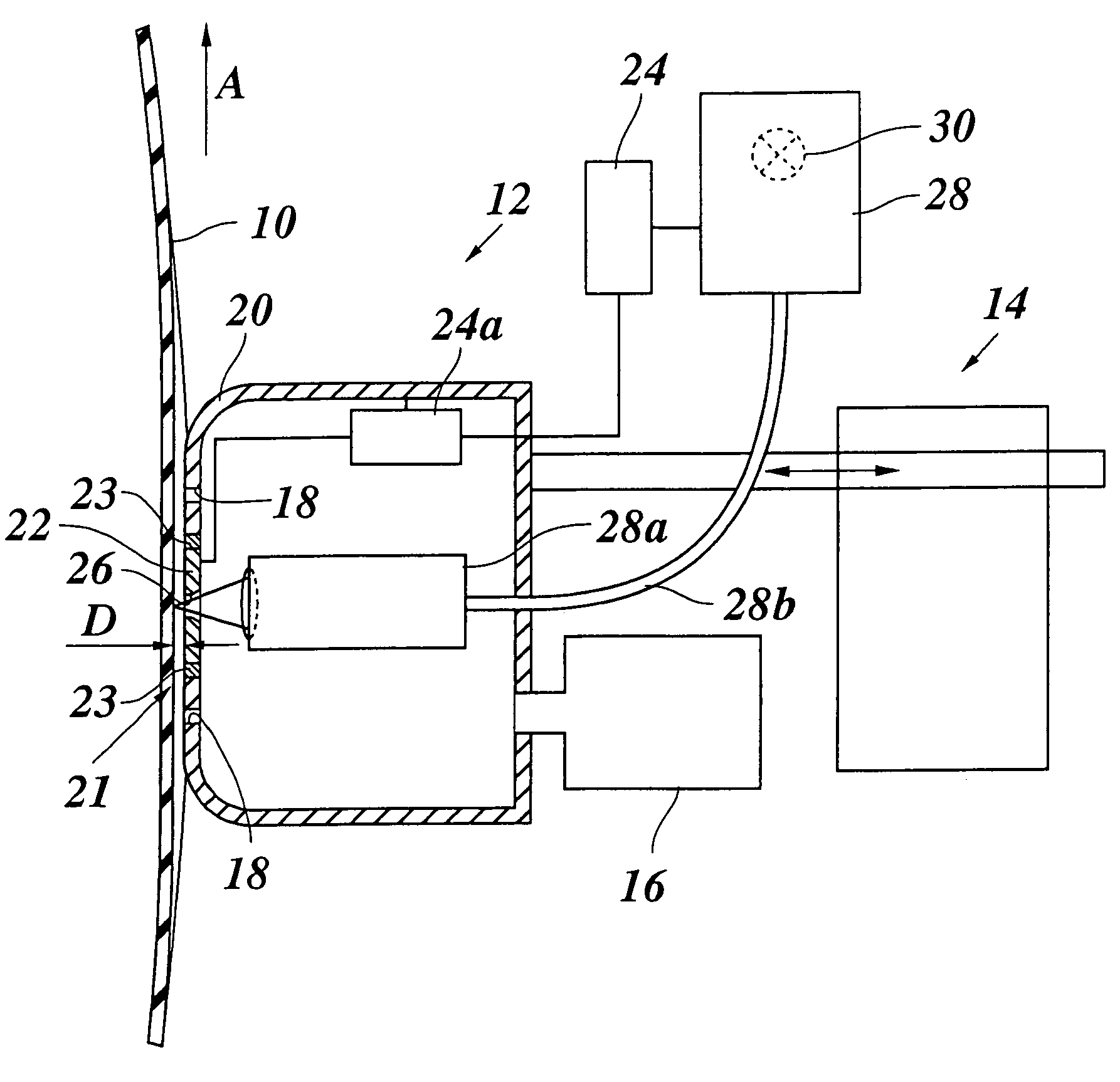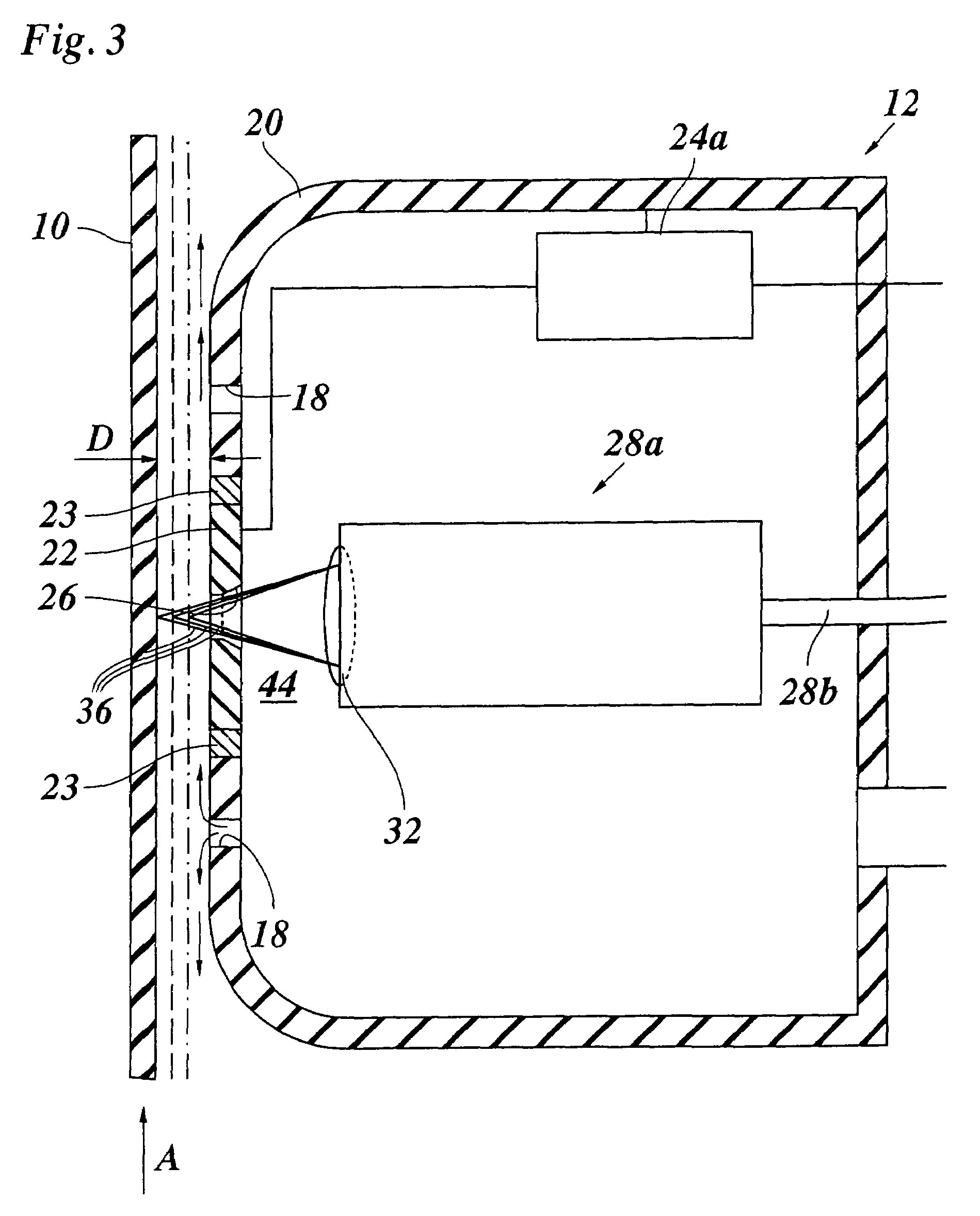Apparatus and method for capacitive measurement of materials
a capacitive measurement and apparatus technology, applied in the direction of electrical/magnetic thickness measurement, magnetic property measurement, instruments, etc., can solve the problem of not meeting the characteristic of measuring methods, the need of a metallic support, and the contact of the ball with the object to be measured, so as to increase the accuracy of thickness measurement
- Summary
- Abstract
- Description
- Claims
- Application Information
AI Technical Summary
Benefits of technology
Problems solved by technology
Method used
Image
Examples
Embodiment Construction
[0025]FIG. 1 shows, in a vertical section, a portion of a tube-like film 10 which is extruded from an extrusion die, is inflated by internal air to form a film bubble and is drawn-off in a direction indicated by an arrow A. For measuring the thickness of the film 10, a measuring head 12 is provided, which is rounded at its front side facing the film 10, in order to prevent the film 10 from being damaged.
[0026]During the measurement, the measuring head 12 is held in front of the film 10 by means of a positioning device 14, and a compressed air generator 16 generates compressed air which exits via supply openings 18 at the front side of the hollow measuring head 12 and causes an air cushion to build up between the measuring head 12 and the film 10. By means of the positioning device 14, the measuring head 12 is held in a position in which it slightly deflects the film 10 with the air cushion. Then, the internal pressure of the film bubble assures that the film 10 passes essentially st...
PUM
 Login to View More
Login to View More Abstract
Description
Claims
Application Information
 Login to View More
Login to View More - R&D
- Intellectual Property
- Life Sciences
- Materials
- Tech Scout
- Unparalleled Data Quality
- Higher Quality Content
- 60% Fewer Hallucinations
Browse by: Latest US Patents, China's latest patents, Technical Efficacy Thesaurus, Application Domain, Technology Topic, Popular Technical Reports.
© 2025 PatSnap. All rights reserved.Legal|Privacy policy|Modern Slavery Act Transparency Statement|Sitemap|About US| Contact US: help@patsnap.com



